NOTE: This article is a "shorter" version of the same post by Lilian Mateu, which was originally published on LinkedIn on 18.09.2022. You can read the full version here.
Special thanks to Lilian for agreeing to republish her original content on the Businessmap blog!
The pace of changes in the world is accelerating, and technology is shaping the future of businesses across sectors, which redefines the professional services playing field. Legal industry leaders and managers are not excluded. They must explore and comprehend the intersection of law, business, and technology to shift to a new paradigm.
Legal services customers demand more effectiveness in work processes, more transparency on fees, more speed on delivery, more predictability, and better budget forecasting. The traditional excuse that a change is impossible because it seems difficult to predict how long a legal matter may take is no longer valid.
Some think a big shift in the legal business model and wide-scale digital transformation will not happen soon. Many things should change in how law is practiced. However, the evolution of the status quo is a complex process. Changing how things are "traditionally done" has to be gradual.
That's why it's necessary to activate a cultural mindset shift. We have to start thinking, working, and organizing differently. We need a better understanding of the value of law for the clients and focus on identifying services. Legal service providers and in-house departments must also embrace a higher purpose than just being profitable.
Having said that, let's explore the basics of Evolutionary Changement Management and how the Legal industry can benefit from it.
Focus on Workflow Efficiency, Not Billable Hours
Legal services have been historically based on the billable-hour model. The industry has been focusing on how many hours individuals spend doing the work and not on how long it takes to complete the task or matter. Consequently, there has traditionally been a focus on keeping people busy because this is the most efficient way to be the most profitable business.
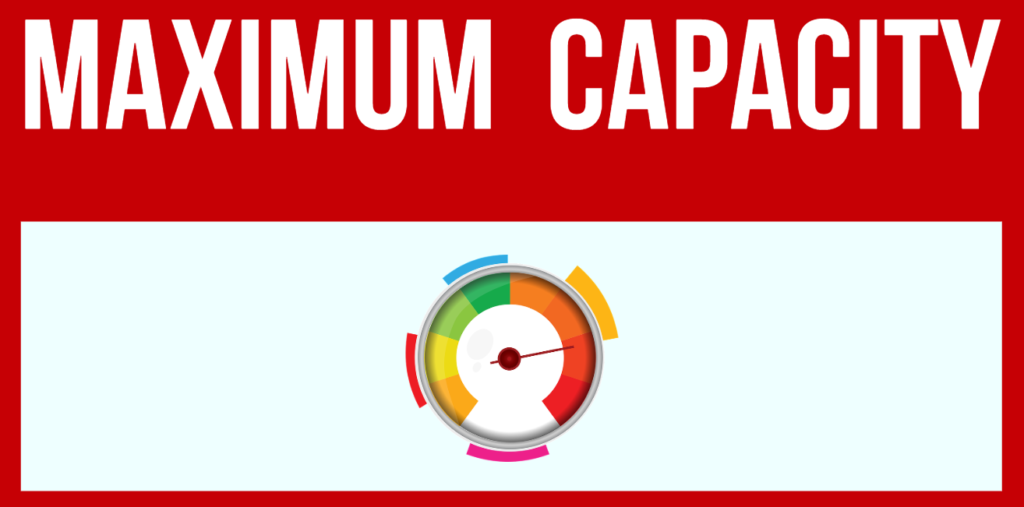
This system threatens the client both by the unpredictability in the scope of work and by potential inefficiency. The change in legal management should be related to managing the work-in-progress (WIP) rather than how individuals spend their time doing the work.
When a customer asks us for something, they care about how long it will take you to get it done, not how much effort you put into it. In other words, it's important to start prioritizing flow efficiency over resource efficiency. Thinking about the value for the customer and improving the speed of delivering legal services is the competitive edge.
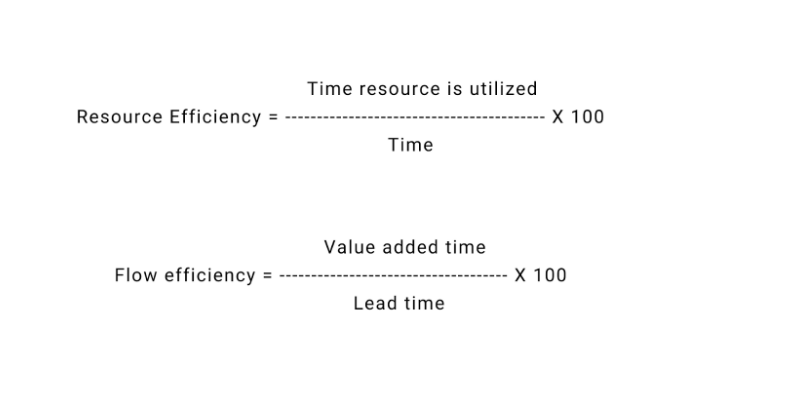 Resource efficiency vs. flow efficiency calculation
Resource efficiency vs. flow efficiency calculation
What to Keep In Mind When Managing Knowledge Work?
First, it's important to recognize that we are dealing with human beings. We struggle to hold too many things in our heads. We work at an optimal level when we have only two or three things in progress at a time, where one is a primary task, and the other two are subsidiary tasks (where another person is the primary owner).
Secondly, knowledge work activities where we're discovering information have a high cost of delay. Information has a shelf life and is perishable in nature. In professional legal operations, time matters! We are dealing with hard delivery dates, like court hearings, tax returns, etc. Hence, there is value in discovering information quickly and communicating the results promptly.
That's why legal businesses should focus on managing workflows and improving flow efficiency. With the right technology, they can achieve higher levels of productivity and predictability. Eventually, this can also positively impact the people who are the core of the Legal industry.
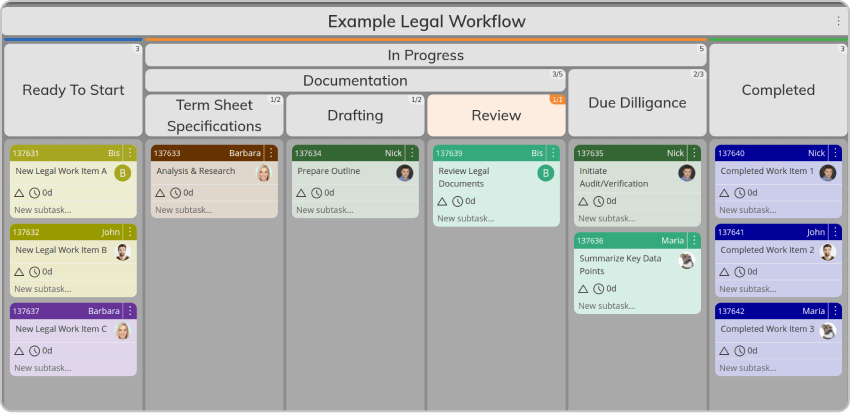 Visualizing and managing an example Legal services workflow on a Kanban board
Visualizing and managing an example Legal services workflow on a Kanban board
Legal Change Management: Evolving Incrementally to Overcome Resistance
Changing the way we think, behave, work, and collaborate is challenging for everyone. As humans, we all experience social and organizational changes personally.
Some changes, like a new job title, can emotionally affect us if they concern our identity, our position, or the purpose and meaning of our contribution to the organization. Changes, as a new role, might impact our dignity, social rank, and self-esteem based on whether or not we're respected by our organization.
Other changes, such as the tools/technology we use, may also affect our confidence if it has an impact on our skills and capabilities. This could naturally increase our fear that we will seem incompetent, hence that our status in society will diminish. So, any change that affects us emotionally will be naturally met with high levels of resistance. That's why social psychologists call them "Structural Changes".
"People don't resist change, they resist being changed".
Peter M. Senge
Having said that, our first strategy with (legal) change management should always be to avoid introducing structural social changes when and where possible. Think about how we initially used phones only for voice calls and text messaging. Phones evolved to be smarter, which changed our social behavior. But those changes were incremental, and we progressively got used to them.
This means we have to be smart about introducing changes in our organizations. Implementing them incrementally is smarter because they have a collateral effect. In time, social and structural change will happen progressively, which will not cause high resistance.
Initially, no one gets a new job title or responsibilities in change management. We have to start with what we do now, focus on the work and let people self-organize. Then, the idea is to manage the workflow, eliminate delays, shrink lead times, and ultimately improve the customer experience.
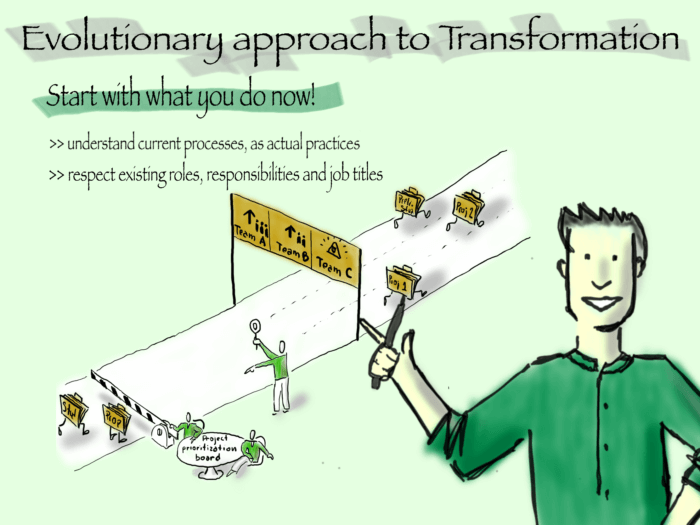
Secondly, we need to think and operate in services, but not in a way that involves reorganizing our business into service-oriented units. The way to do this is to encourage existing functional units in our business to cooperate and collaborate together.
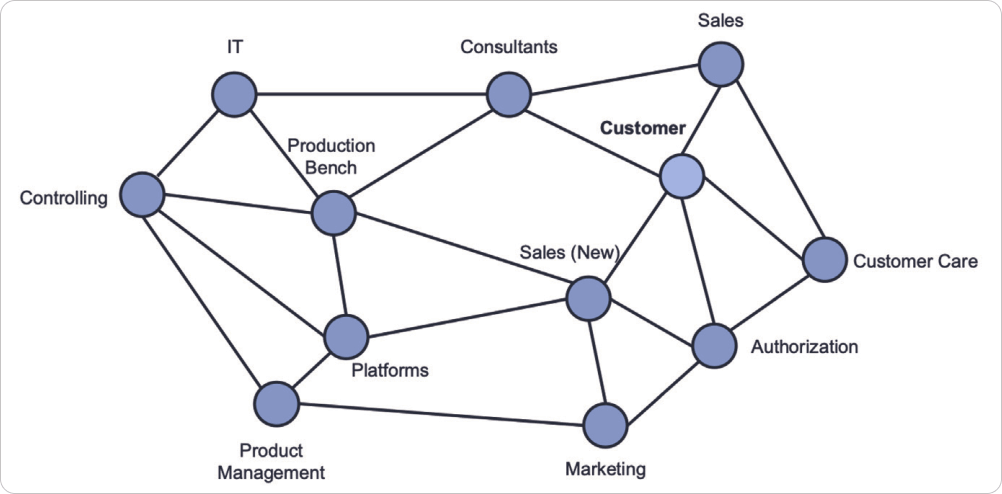 Organizations are a network of interdependent services
Organizations are a network of interdependent services
We have to define a customer-oriented service that flows through different units within the organization. Then, the focus should be to drive cooperation at scale to deliver the service to the customer successfully. To make that happen, we don't have to reorganize the company's structure, people's roles, and responsibilities.
The Sports Coaching Approach in Legal Change Management
To drive evolutionary change, we need leaders and managers with adaptive capabilities. This is called disruptive leadership. We need leaders who are willing to disrupt the peaceful equilibrium and modify the status quo. Leaders and managers need to be willing to make people a little bit uncomfortable and catalyze adaptation and evolution.
The formula we propose and how we train managers and leaders to drive changes is much like the Sports Coaching Model. In mature sports, coaches have a playbook. They know how to take little kids and develop them over a period of years, through a progression of achievements, all the way to world championships or the Olympic Games.
All we need is to empower people, make them a little bit uncomfortable with the current state and show them what the future could look like. They will need to learn and acquire some new skills and capabilities to reach the next level. Sometimes we will need to inject some stress into the environment.
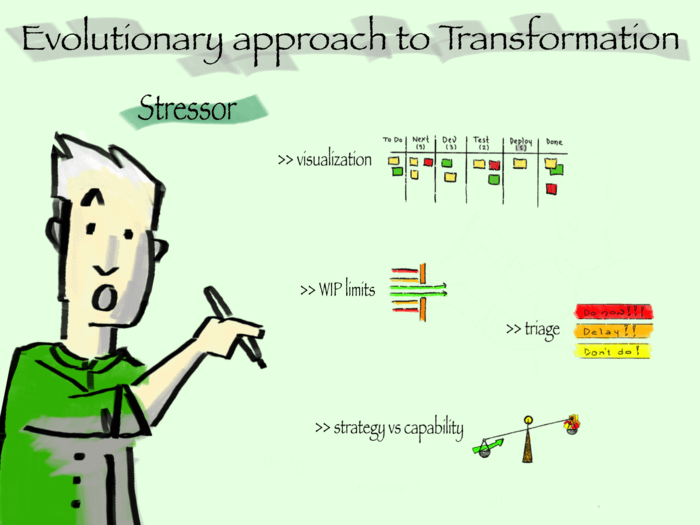
But we need to do this in an environment where people feel safe to fail. This will give them the confidence to experiment (even if they fail initially) and eventually evolve their performance.
In summary, the basic formula of the Evolutionary Change model is as follows:
- First, there must be some stress in the environment. Enough to make people feel uncomfortable but not too much to break them.
- Second, there must be a reflection mechanism and a feedback loop to reflect upon the stress. What is causing the problem, and what can we do about it?
- And third, there must be an act of leadership, someone must inject the energy to enact the change and say, "Let's do something about it".
Improve Until You Achieve "Fitness for Purpose"
Leaders and managers often struggle to understand that an evolutionary change process doesn't have an endpoint. Continuous improvement is always necessary because the world around us will continue to change.
When we've made enough changes, and there are real improvements that make us fit enough for current market conditions, then we won't need to adapt/evolve. This concept is known as "fitness" in evolutionary theory. Then, there will be periods when there's little or no change happening, at least until the next shift in our environment.
To know when we have made enough changes, we need a method of gathering information and a decision framework that helps us establish the "fitness" criteria to measure if our services are good enough in the customer's eyes. A great resource to learn more about this is the "Fit for purpose" book by David J. Anderson and Alexei Zheglov.
How Tech Can Help Improve Service Delivery?
The Legal industry has been predominantly focused on "projects" and "legal project management" rather than "provision of services". So, we have been mostly looking for traditional project management tooling that focuses on "resource efficiency". Instead, we need work-tracking tools.
Professional services produce intangible goods (i.e. invisible work). That's why it's best to have visual tools that help us track, manage and analyze the flow of work. We need to identify what types of work requests we get, who asks for them, and how the work flows through the organization.
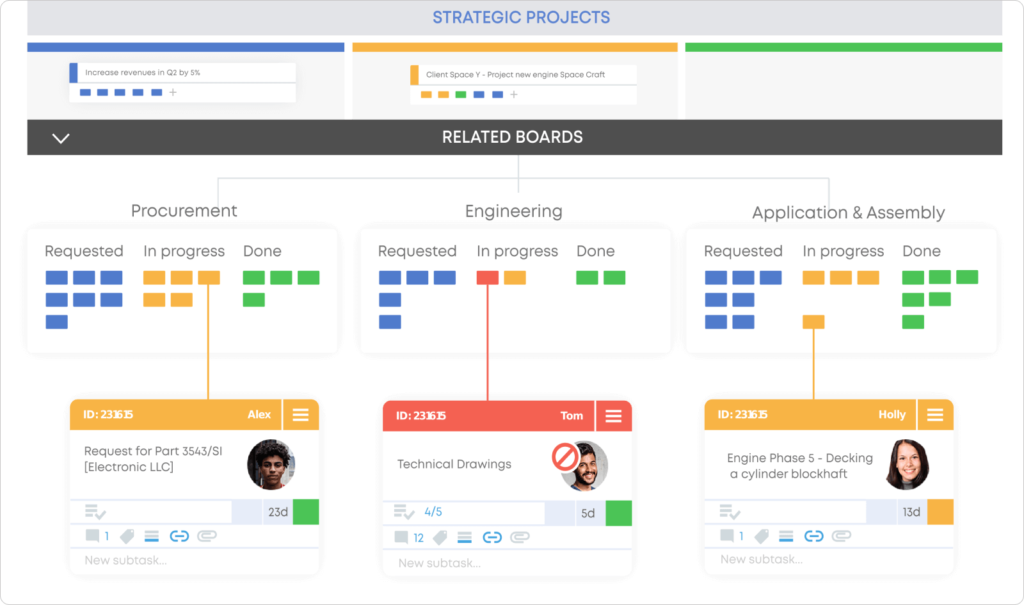 Visualizing the flow of work across different services in the organization through multiple Kanban boards
Visualizing the flow of work across different services in the organization through multiple Kanban boards
Furthermore, it's important for legal professionals to identify the "services" they offer. That's because every type of work has different workflows, requires different people, and takes different amounts of time. Also, it's important to note that not all work should be treated the same way. We need to understand its urgency and the cost of delay, which will tell us what "class of service" to apply to it. At the end of the day, sometimes customers are willing to pay more for express service or better treatment.
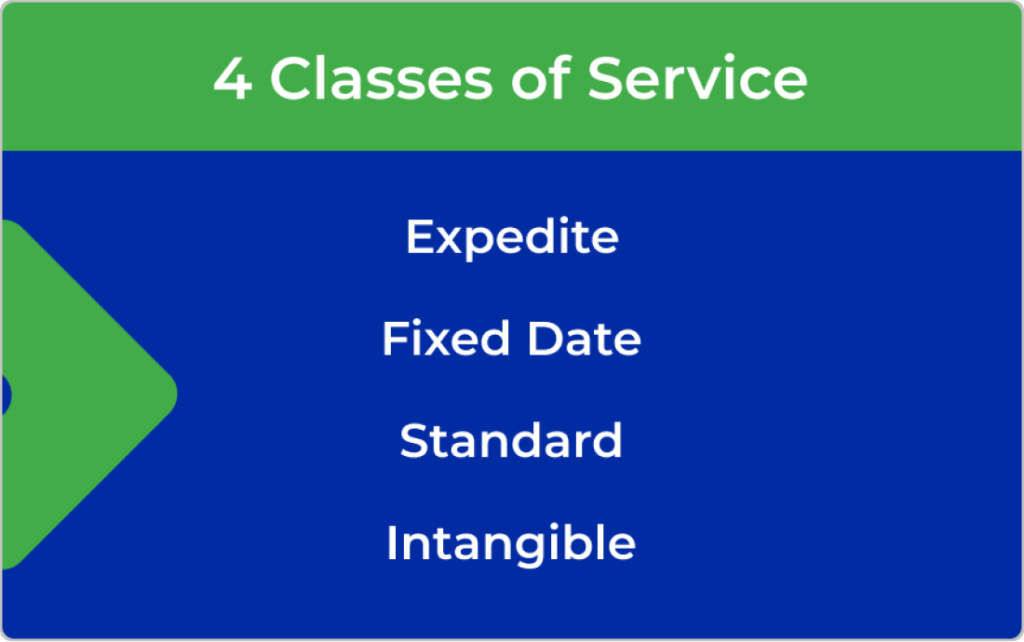 The most common classes of service in Kanban
The most common classes of service in Kanban
To do this in practice, there are helpful work management solutions available on the market. You can check out some of the best solutions that utilize the power of the Kanban method.
Lead with the Purpose of Pursuing Organizational Maturity
Finally, where should the focus be on creating better organizations?
A famous quote states: "People join your business, and they leave their manager".
We should be thinking about this more. People sign up for a mission or purpose because they believe they would contribute to the world, but they quit because it's a lousy workplace. They need to work for a higher reason than just collecting paychecks or improving their CVs.So, the first thing to realize is that we must lead with purpose. We need purpose-driven businesses and not merely for individual or selfish organizational reasons or business profits.
A favorite quote of Richard Branson, founder of Virgin, is:
"People believe that businesses exist to make profits. They have that backward, businesses make profits in order to exist."
Business profits enable us to keep going to survive and make our purpose a reality because that's why the organization was created for in the first place. Simply making profits is not a good enough reason to exist. An economically viable business is not good enough. While the preservation of our organization's survival is a concern, it cannot be our mission.
So, we must lead with purpose!
And finally, maturity also matters! We must pursue organizational maturity as a core part of our strategy. Not just because of employee engagement and loyalty but because you'll create an environment where everyone wins: customers get great service, managers feel successful, owners are happy with the company's performance, and employees are motivated because they feel respected in your environment.

Lilian Mateu
Guest Author
Lilian Mateu is an experienced Lawyer, Business Consultant, Agile coach, Accredited Kanban Trainer, and Kanban Coaching Professional. She has over 25 years of experience in the legal industry and has specialized in Evolutionary Change Management for legal services organizations and legal operations in in-house departments.



